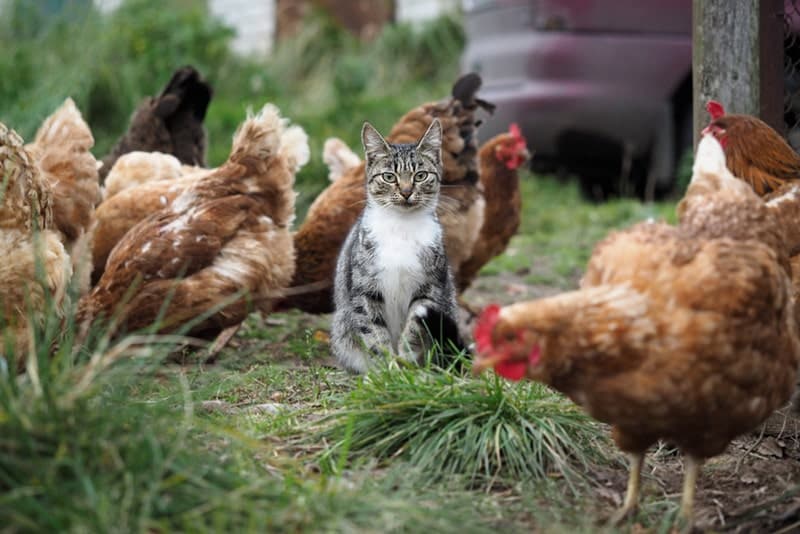Cats are natural predators. They occupy the mesopredator spot in almost every food web, and they have very few known enemies. If you put a cat and a chicken in a room together, even if they’re domesticated, their instincts will instantaneously kick in. For this reason, it’s unlikely that a cat will ever become bonded enough with a chicken to protect it from harm. Of course, your cat may be able to protect chickens from small vermin such as rats.
Then again, that doesn’t imply that it’s impossible to tame your cat to get used to having chickens around so that they can all live harmoniously, even though the cat may not necessarily protect them.
The 3 Different Types of Cats
As a flock owner, you must acquaint yourself with the cats roaming around your chicken coop. This is important, as it will help you avoid unnecessary heartache. There are domesticated, farm, and feral cats, which will have different reactions to chickens.
1. Domesticated Cats
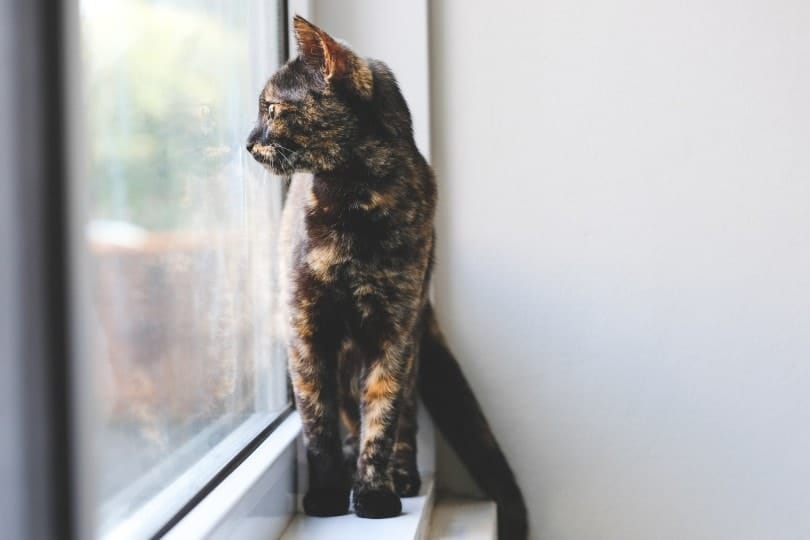
A domesticated cat has lived with a human companion for years, probably since they were born, and some are tolerant of other animals. Sadly, their hunting instincts never go away. That’s an upside if you’re hoping to keep rodents at bay but a disadvantage for those practicing poultry farming or looking to add chickens to their pet collection.
A domesticated cat will rarely attack an adult chicken, but the same can’t be said about the baby chicks. Some people believe this could be because the chicks usually bear a striking resemblance to their feathered toys, but it’s likely due to their small size and limited defenses.
2. Farm Cats
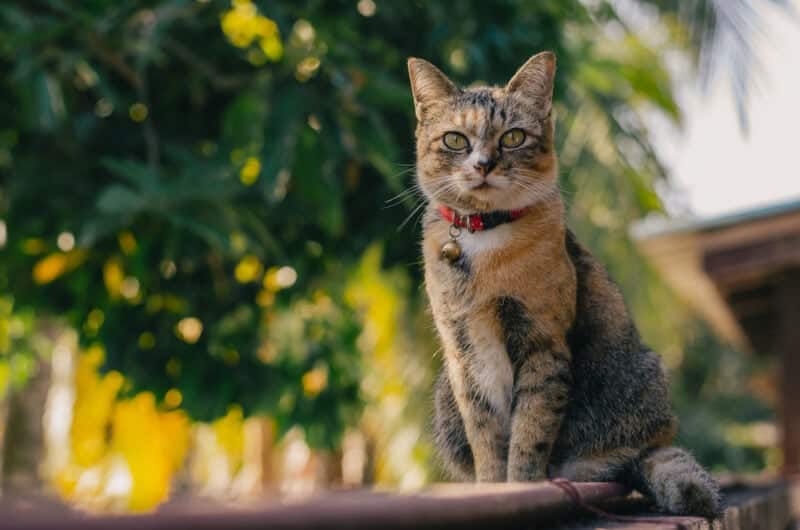
Barn or farm cats are also somewhat domesticated, but they primarily live outdoors and close to humans, not in a home. They are usually mixed breeds brought up in either feral or semi-feral conditions.
Their diets purely consist of vermin, and they help farmers take care of animals that destroy crops or spread diseases to their livestock. Since they hunt daily, they’ll be curious to know what goes on inside the chicken coop. Free-ranging your flock is not an option if there’s a barn cat around.
3. Feral Cats and Strays
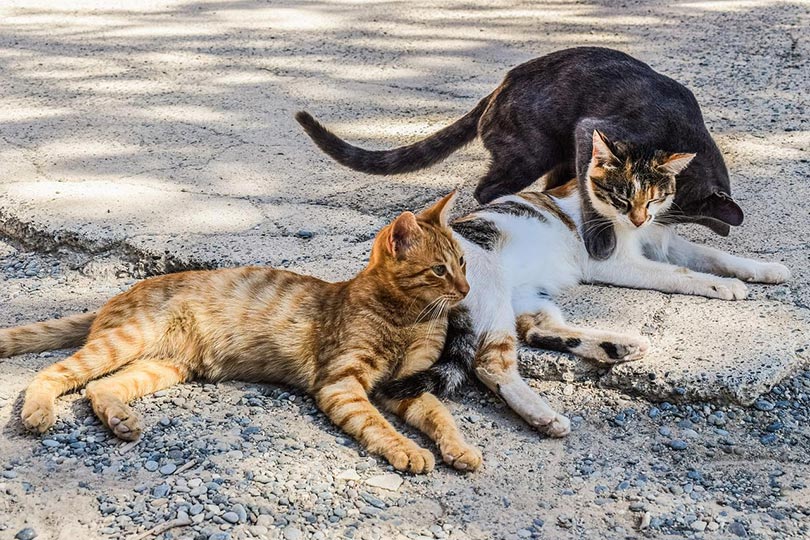
For the record, feral cats and strays are different in several ways. Even though the terms are often used interchangeably, a feral cat is a feline that has never had human contact, while a stray has.
You’ll be able to tell the difference judging from their behavior. When a feral cat sees you, they instinctively run to hide. You’ll never be able to get near them, as they are always alert, trying to spot danger lurking in the shadows. Although most cats are solitary hunters, feral felines live in colonies since there is strength in numbers.
A stray, on the other hand, will first assess the situation. Some will walk up to humans, but others will ignore them and carry on. They usually spend most of their time hunting because coming by food is not easy in the wild. That’s how we know feral and stray cats will attack your flock if they can access the coop.
Warning: Do not try to catch a feral cat by hand. Some won’t hesitate to bite or scratch anyone who tries to get between them and their next meal.
Also, they are known to spread Cat Scratch Disease (CSD), which is a bacterial infection. While the infection is not fatal, you may experience a fever, fatigue, and general discomfort.
How Do You Train Your Cats to Get Along with Your Chickens?
1. Use a Fence
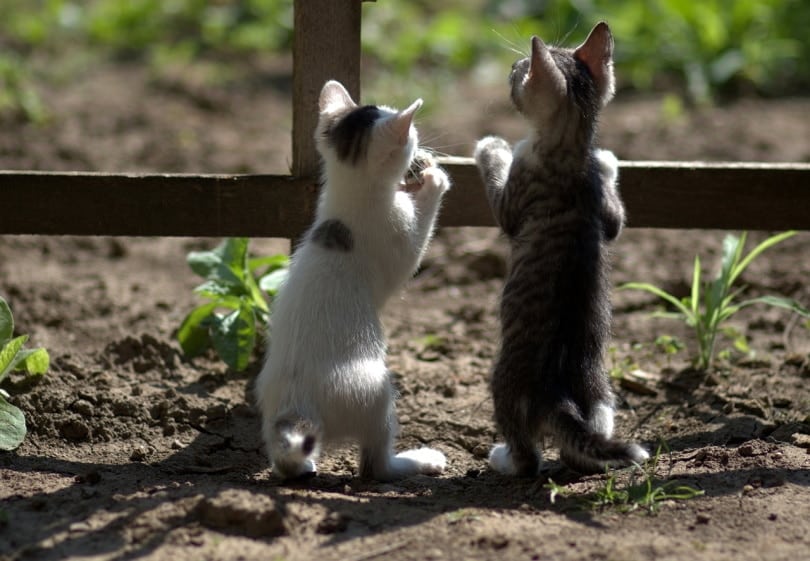
Cats are naturally curious. The best approach is to get them used to seeing chickens around and make them think your chickens are part of the family. However, be cautious during the introductions. Use a wire mesh fence to enable them to look through but not enter the flock’s personal space. Take a minute to see how they react.
Hissing or trying to scratch the fences are signs that their predatory instincts have kicked in. Don’t push them away; it will only make them more aggressive. Instead, give them their favorite toy as a distraction.
Do this for a few weeks until you notice a change in their behavior around the chickens. If you sense they have graduated from hostile to hospitable, move on to the next stage of training.
2. Face-To-Face Introductions
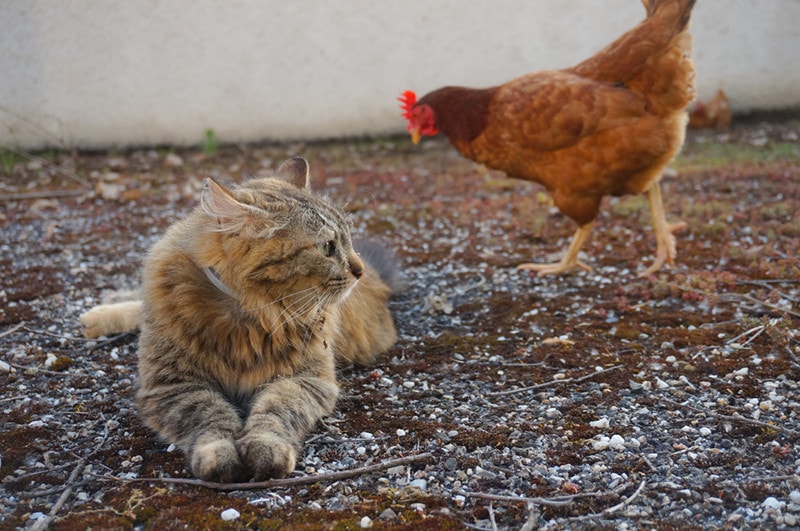
You still have to control the situation, as the cat only takes a second to pounce on their prey. Hold the cat and see how they behave whenever the chicken walks by. If there are no signs of aggressiveness or unsavory behavior, hold the chicken and let the cat roam freely.
You’ll know it’s okay to let them hang out together once the cat seems unphased by the chicken’s presence. But you still must supervise their interactions.
Conclusion
Like humans, cats have unique personalities. Therefore, training some of them will be more difficult than others. Also, some breeds have a stronger predatory instinct than others, and they might not get along with the chickens.
Even when trained to live peacefully with chickens, it is unlikely that a cat will ever protect them from large predators, but they can help with smaller vermin like rats, which can cause issues with chicken flocks.
Featured Image Credit: Irina Kozorog, Shutterstock

